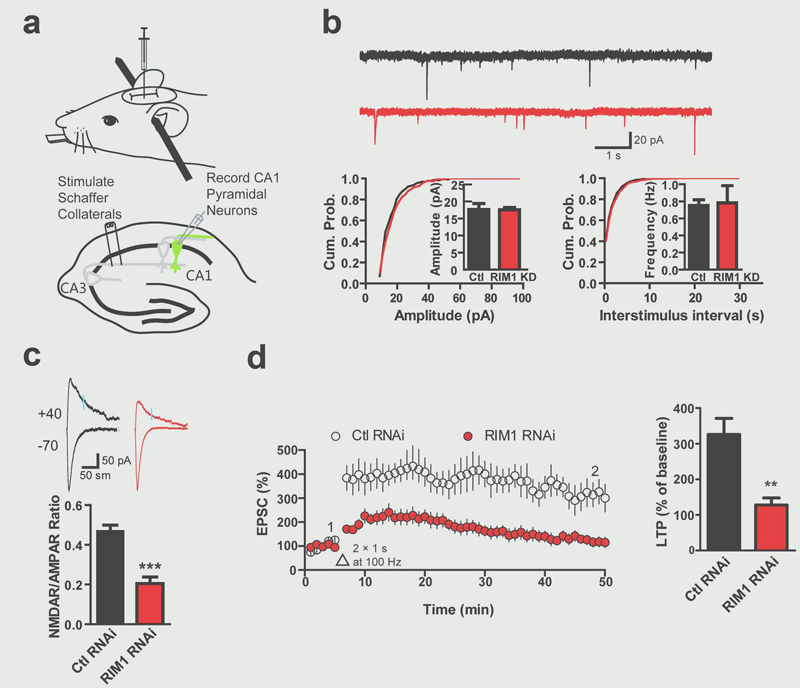On June 11, 2018, Nature Communications published online a research article entitled “Postsynaptic RIM1 modulates synaptic function by facilitating membrane delivery of recycling NMDARs in hippocampal neurons” from Prof. Qiu’s group. This study reveals that scaffolding protein RIM1 participates in regulating postsynaptic NMDA receptor trafficking and modulating synaptic plasticity and learning and memory (Fig.1).

Fig. 1 Model for RIM1-mediated NMDAR trafficking.
NMDA receptor is the key regulator for learning and memory. The number and function of synaptic NMDA receptor is critically regulated. However, it is still a mystery how NMDA receptors move in or out of the synapse. Qiu’s group found that RIM1, a key molecule involved in presynaptic vesicle trafficking, is also located postsynaptically. By using viral injection and electrophysiology, they found that postsynaptic RIM1 determines NMDAR-mediated synaptic transmission and plasticity (Fig. 2), as well as hippocampus-dependent learning and memory. Furthermore, postsynaptic RIM1 is specifically involved in NMDAR recycling via acting as an effector of Rab11.
This work certificates for the first time that RIM1 is also located postsynaptically and specifically involved in the recycling of NMDA receptors. It also suggests that the trafficking of postsynaptic receptor may share similar mechanisms with that of presynaptic neurotransmitter vesicles.

Fig. 2. RIM1 in area CA1 is involved in NMDAR-mediated synaptic transmission and plasticity.
The study was completed by Jiejie Wang and Xinyou LV (Ph.D. students). This work was supported by the National Foundation of Natural Science of China, National Foundation of Natural Science of Zhejiang Province, and the Chinese Ministry of Education Project 111 Program.
(Source: Shuang QIU’s Group, School of Basic Medical Sciences)